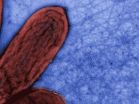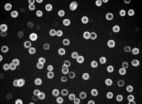(Press-News.org) Columbia University Medical Center researchers have shown that new, or "de novo," protein-altering mutations—genetic errors that are present in patients but not in their parents—play a role in more than 50 percent of "sporadic" —i.e., not hereditary—cases of schizophrenia. The findings will be published online on August 7, 2011, in Nature Genetics.
A group led by Maria Karayiorgou, MD, and Joseph A. Gogos, MD, PhD, examined the genomes of patients with schizophrenia and their families, as well as healthy control groups. All were from the genetically isolated, European-descent Afrikaner population of South Africa.
These findings build on earlier studies by Karayiorgou, professor of psychiatry at Columbia University Medical Center. More than 15 years ago, Karayiorgou and her colleagues described a rare de novo mutation that accounts for 1-2 percent of sporadic cases of schizophrenia. With advances in technology, three years ago the Columbia team was able to search the entire genome for similar lesions that insert or remove small chunks of DNA. The mutations found accounted for about 10 percent of sporadic cases.
Encouraged by their progress, they wondered whether other, previously undetectable, de novo mutations accounted for an even greater percentage of sporadic cases. Using state-of-the-art "deep sequencing," they examined the nucleotide bases of almost all the genes in the human genome. This time they found 40 mutations, all from different genes and most of them protein-altering. The results point the way to finding more, perhaps even hundreds, of mutations that contribute to the genetics of schizophrenia—a necessary step toward understanding how the disease develops.
"Identification of these damaging de novo mutations has fundamentally transformed our understanding of the genetic basis of schizophrenia," says Bin Xu, PhD, assistant professor of clinical neurobiology at Columbia University Medical Center and first author of the study.
"The fact that the mutations are all from different genes," says Karayiorgou, "is particularly fascinating. It suggests that many more mutations than we suspected may contribute to schizophrenia. This is probably because of the complexity of the neural circuits that are affected by the disease; many genes are needed for their development and function." Karayiorgou and her team will now search for recurring mutations, which may provide definitive evidence that any specific mutation contributes to schizophrenia.
The potentially large number of mutations makes a gene-therapy approach to treating schizophrenia unlikely. Researchers suspect, however, that all of the mutations affect the same neural circuitry mechanisms. "Using innovative neuroscience methods," says co-author Dr. Joseph Gogos, MD, PhD, and associate professor of physiology and neuroscience at Columbia University Medical Center, "we hope to identify those neural circuit dysfunctions, so we can target them for drug development."
The study's results also help to explain two puzzles: the persistence of schizophrenia, despite the fact that those with the disease do not tend to pass down their mutations through children; and the high global incidence of the disease, despite large environmental variations.
###
The study's authors are Bin Xu (CUMC), J. Louw Roos (University of Pretoria), Phillip Dexheimer (HudsonAlpha Institute), Braden Boone (HudsonAlpha Institute), Brooks Plummer (HudsonAlpha Institute), Shawn Levy (HudsonAlpha Institute), Joseph A. Gogos (CUMC), and Maria Karayiorgou (CUMC).
The study was supported by NIMH, the Lieber Center for Schizophrenia Research at Columbia University, and NARSAD.
The authors declare no financial conflict of interest.
Columbia University Medical Center provides international leadership in basic, pre-clinical, and clinical research; in medical and health sciences education; and in patient care. The medical center trains future leaders and includes the dedicated work of many physicians, scientists, public health professionals, dentists, and nurses at the College of Physicians and Surgeons, the Mailman School of Public Health, the College of Dental Medicine, the School of Nursing, the biomedical departments of the Graduate School of Arts and Sciences, and allied research centers and institutions. Established in 1767, Columbia's College of Physicians and Surgeons was the first institution in the country to grant the M.D. degree and is among the most selective medical schools in the country. Columbia University Medical Center is home to the largest medical research enterprise in New York City and State and one of the largest in the United States. For more information, please visit www.cumc.columbia.edu.
Columbia Psychiatry is ranked among the best departments and psychiatric research facilities in the Nation and has contributed greatly to the understanding of and current treatment for psychiatric disorders. Located at the New York State Psychiatric Institute on the NewYork-Presbyterian Hospital/Columbia University Medical Center campus in the Washington Heights community of Upper Manhattan, the department enjoys a rich and productive collaborative relationship with physicians in various disciplines at Columbia University's College of Physicians and Surgeons. Columbia Psychiatry is home to distinguished clinicians and researchers noted for their clinical and research advances in the diagnosis and treatment of depression, suicide, schizophrenia, bipolar and anxiety disorders, and childhood psychiatric disorders.
Mutations not inherited from parents cause more than half the cases of schizophrenia
2011-08-09
ELSE PRESS RELEASES FROM THIS DATE:
UMass Amherst research team discovers new conducting properties of bacteria-produced wires
2011-08-09
AMHERST, Mass. – The discovery of a fundamental, previously unknown property of microbial nanowires in the bacterium Geobacter sulfurreducens that allows electron transport across long distances could revolutionize nanotechnology and bioelectronics, says a team of physicists and microbiologists at the University of Massachusetts Amherst.
Their findings reported in the Aug. 7 advance online issue of Nature Nanotechnology may one day lead to cheaper, nontoxic nanomaterials for biosensors and solid state electronics that interface with biological systems.
Lead microbiologist ...
ESDS Announces the Launch of eNlight - The Dynamic Cloud Computing Platform
2011-08-09
eNlight - Taking the Cloud Computing Industry by Storm
ESDS is pleased to announce the launch of its eNlight Cloud Computing Platform - the World's first intelligent cloud that truly does justice to the concept of Cloud Computing. eNlight Cloud is an addition to the company's existing portfolio of other software products and managed hosting services and was designed with small to medium sized companies in mind. In the existing Cloud Hosting market most companies offer the option to pay for fixed use. Companies try to market it as flexible hosting by claiming you can ...
HIA-LI Recognizes Finalists for Prestigious 17th Annual Business Achievement Awards
2011-08-09
HIA-LI, the recognized voice for business on Long Island, is pleased to announce the finalists for the prestigious HIA-LI 17th Annual Business Achievement Awards competition. Winners will be announced during a gala luncheon event held at the Crest Hollow Country Club in Woodbury, NY, 11:30 AM - 2:00 PM, Tuesday, September 13, 2011. More information about the awards event is available at: http://bit.ly/hia-li-baa-event-2011.
"HIA-LI is pleased to recognize these finalists who are among the best run and highest performing companies on Long Island for our HIA-LI Business ...
The nanoscale secret to stronger alloys
2011-08-09
Long before they knew they were doing it – as long ago as the Wright Brother's first airplane engine – metallurgists were incorporating nanoparticles in aluminum to make a strong, hard, heat-resistant alloy. The process is called solid-state precipitation, in which, after the melt has been quickly cooled, atoms of alloying metals migrate through a solid matrix and gather themselves in dispersed particles measured in billionths of a meter, only a few-score atoms wide.
Key to the strength of these precipitation-hardened alloys is the size, shape, and uniformity of the ...
New resource to unlock the role of microRNAs
2011-08-09
A new resource to define the roles of microRNAs is announced today in Nature Biotechnology. The resource, called mirKO, gives researchers access to tools to investigate the biological role and significance for human health of these enigmatic genes.
mirKO is a "library" of mutant mouse embryonic stem (ES) cells in which individual, or clustered groups of microRNA genes, have been deleted. Using these tools researchers can create cells or mice lacking specific microRNAs, study expression using fluorescent markers, or inactivate the gene in specific tissues or at specific ...
UNC-Duke ties lead to collaborative finding about cell division & metabolism
2011-08-09
Chapel Hill, NC – Cells are the building blocks of the human body. They are a focus of scientific study, because when things go wrong at the cellular and molecular level the consequences for human health are often significant.
A new finding based on multiple collaborations between UNC and Duke scientists over several years points to new avenues for investigation of cell metabolism that may provide insights into diseases ranging from neurodegenerative disorders like Parkinson's and Alzheimer's disease to certain types of cancers.
The finding, published today in the ...
Brain's map of space falls flat when it comes to altitude
2011-08-09
Animal's brains are only roughly aware of how high-up they are in space, meaning that in terms of altitude the brain's 'map' of space is surprisingly flat, according to new research.
In a study published online today in Nature Neuroscience, scientists studied cells in or near a part of the brain called the hippocampus, which forms the brain's map of space, to see whether they were activated when rats climbed upwards.
The study, supported by the Wellcome Trust, looked at two types of cells known to be involved in the brain's representation of space: grid cells, which ...
Cell-based alternative to animal testing
2011-08-09
European legislation restricts animal testing within the pharmaceutical and cosmetic industries and companies are increasingly looking at alternative systems to ensure that their products are safe to use. Research published in BioMed Central's open access journal BMC Genomics demonstrates that the response of laboratory grown human cells can now be used to classify chemicals as sensitizing, or non-sensitizing, and can even predict the strength of allergic response, so providing an alternative to animal testing.
Allergic contact dermatitis can result in itching and eczema ...
Research discovers frequent mutations of chromatin remodeling genes in TCC of the bladder
2011-08-09
August 8th, 2011, Shenzhen, China – BGI, the world's largest genomics organization, Peking University Shenzhen Hospital and Shenzhen Second People's Hospital, announced today that the study on frequent mutations of chromatin remodeling genes in transitional cell carcinoma (TCC) of the bladder was published online in Nature Genetics. This study provides a valuable genetic basis for future studies on TCC, suggesting that aberration of chromatin regulation might be one of the features of bladder cancer.
Bladder cancer is the ninth most common type of cancer worldwide, which ...
How yeast chromosomes avoid the bad breaks
2011-08-09
CAMBRIDGE, Mass. (August 7, 2011) – The human genome is peppered with repeated DNA elements that can vary from a few to thousands of consecutive copies of the same sequence. During meiosis—the cell division that produces sperm and eggs—repetitive elements place the genome at risk for dangerous rearrangements from genome reshuffling. This recombination typically does not occur in repetitive DNA, in part because much of it is assembled into specialized heterochromatin. Other mechanisms that restrain recombination in repetitive DNA have remained elusive, until now.
In a ...


